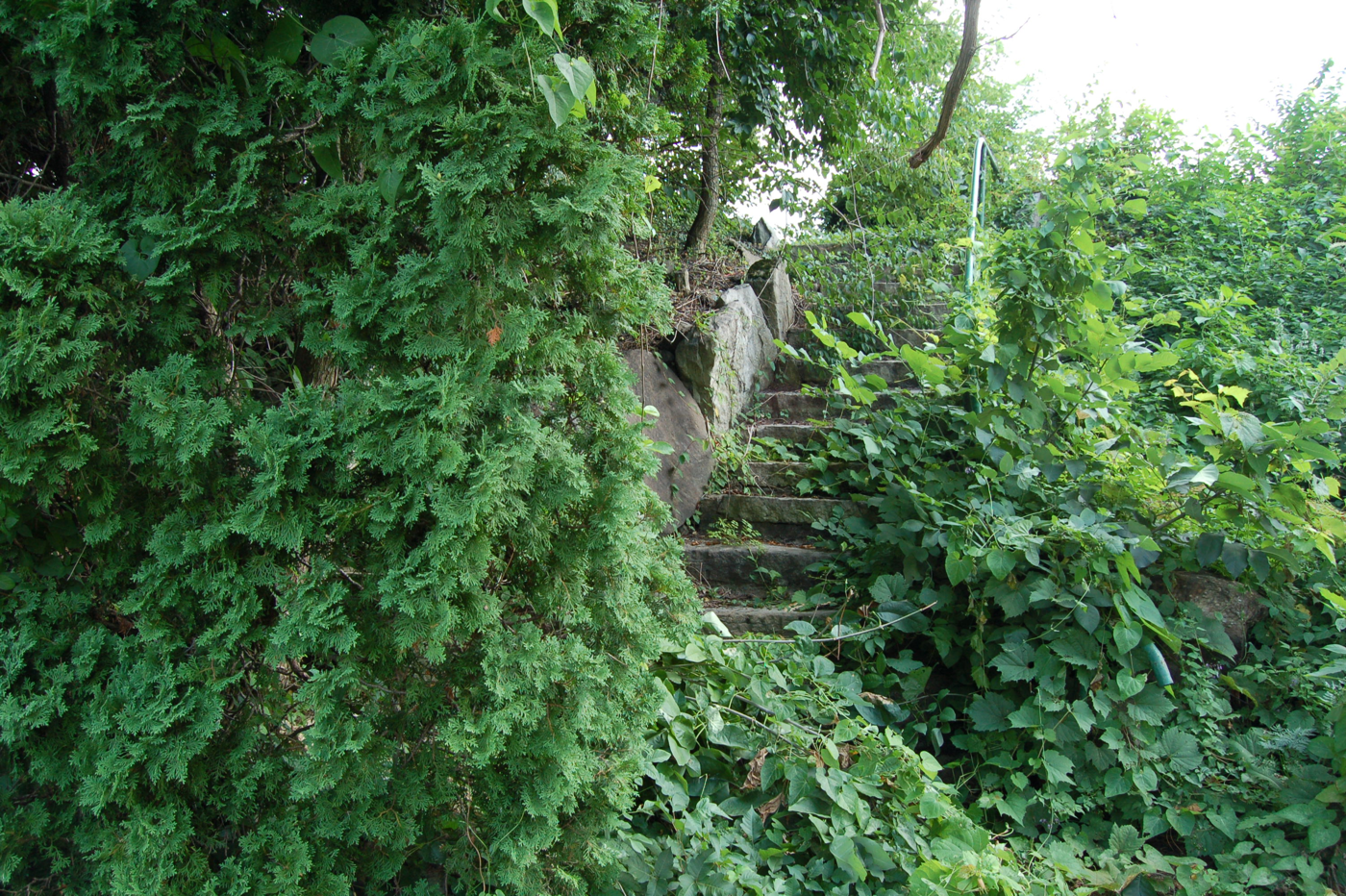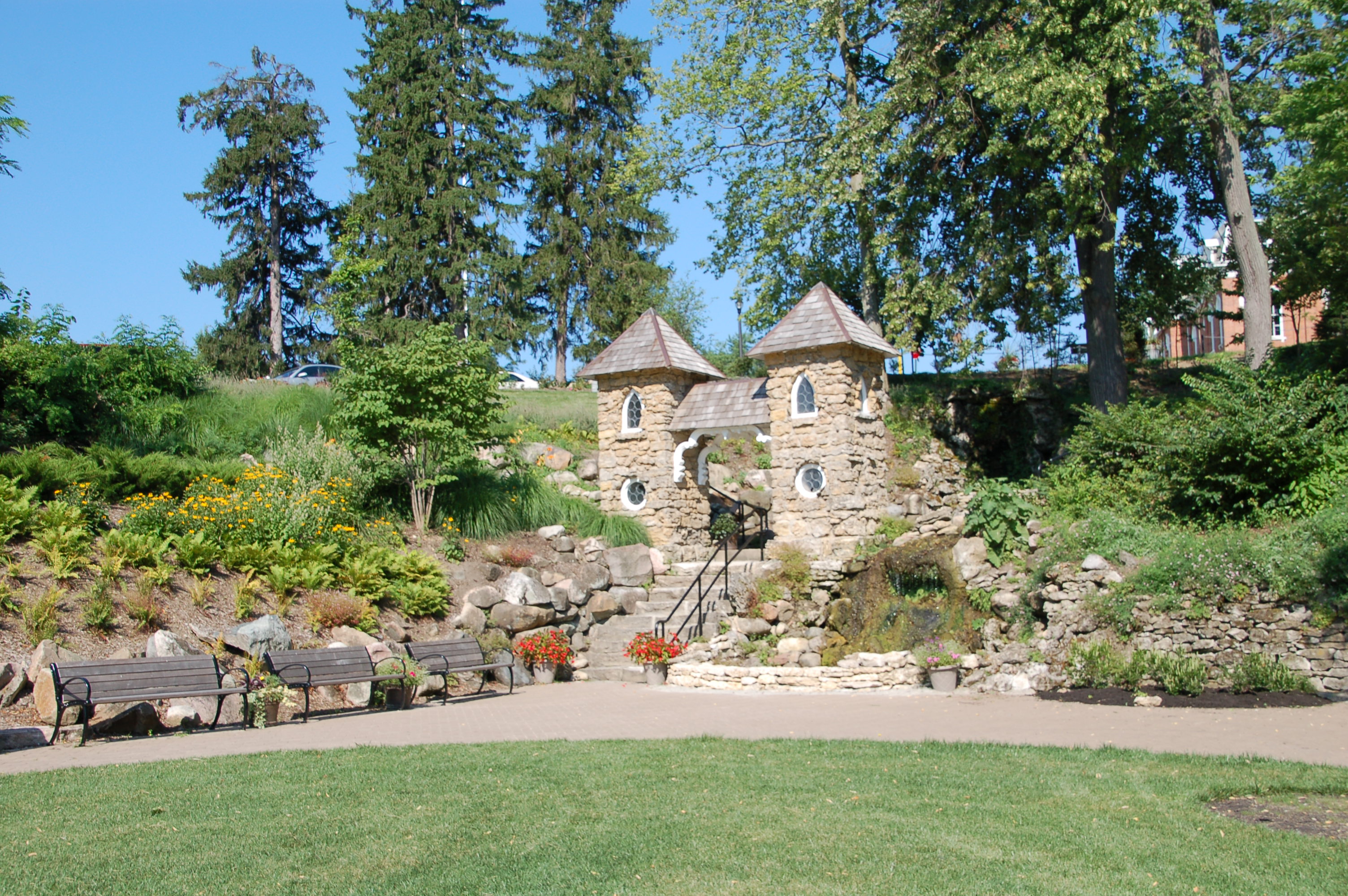The Story
Dayton Department of Veterans Affairs Medical Center (VAMC), once known as Central Branch, opened in 1867 and served as the central supply depot and national headquarters of the National Home for Disabled Volunteer Soldiers system. Originally established by Congress in 1865, the Home system was designed to provide medical, surgical, and domiciliary care for disabled Union veterans in a comforting and homelike setting, which included educational facilities, employment opportunities, and recreational amenities. The VAMC was listed on the National Register of Historic Places in 2004 and designated a National Historic Landmark in 2012.
The historic buildings at Dayton reflect revival styles popular at the time, but the facility is best known for its landscapes and gardens, the most famous being the Grotto. The original grotto landscape began in 1868, when a resident veteran and florist, Frank Mundt, began installing plantings at the site of a former quarry located on the grounds. Mundt’s work supported the overall landscape design of architect C. B. Davis found throughout the campus. Over the years, the veteran-maintained gardens grew quite elaborate and famous. At its high point, the Grotto, accessed through a stone archway, featured several themed gardens and received thousands of visitors a year.
As the Central Branch evolved into the modern VAMC of today, attention to the wellbeing of the historic garden landscapes faded resulting in funding and maintenance cutbacks. The Grotto itself had fallen into decline with many structures needing repair and the gardens overrun with invasive plants.
The Project
In 2012, the VAMC, in partnership with the American Veterans Heritage Center (AVHC), initiated plans for restoration and repair work at the Grotto site. AVHC, a local nonprofit dedicated to honoring and preserving the history and structures of the historic Central Branch, spearheaded the support for the VAMC to conduct the repairs, which would focus on structural work and minor landscaping.
Throughout the development and execution of the project, the VAMC consulted with the Ohio State Historic Preservation Office (SHPO). Early in design, the VAMC, with the support of contractors and the AVHC, prepared conceptual plans and documentation for the proposed restoration and repair. These documents and design drawings identified how the necessary repairs would be performed without damaging the historic Grotto and how the restoration of the garden spaces would sensitively reflect their historic use. As the project developed, the VAMC and AVHC reached out to the Ohio State University Extension, Montgomery County Master Gardener Volunteers (MCMGV) for expertise in restoring the former garden spaces. MCMGV provided expertise and volunteers who could assist in clearing overgrowth and installing new beds. The final proposed project included both structural repairs and volunteer-driven restoration and replanting efforts. The involvement of the MCMGV enhanced the project by incorporating expert interpretation of the plantings within the garden spaces.
The VAMC provided updated plans and designs to the SHPO for review and input throughout the process. This cooperative and ongoing consultation resulted in the project preserving and restoring many garden features and the VAMC avoiding adverse effects to the historic character of the gardens altogether.
The Success
Since the completion of the original work in 2013, the Grotto has become a valuable healing tool for the veterans and families. The VAMC and AVHC have continued their collaboration through the MCMGV, which provides for ongoing maintenance and restoration of the gardens. With Section 106 as an important backdrop, the Grotto restoration exemplifies the benefits of a federal agency developing and fostering partnerships with non-profit organizations, volunteers, the SHPO, and outside professionals for the preservation and treatment of historic properties. The result was an outstanding historic preservation project that continues to advance the VA’s mission of healing wounded warriors.

